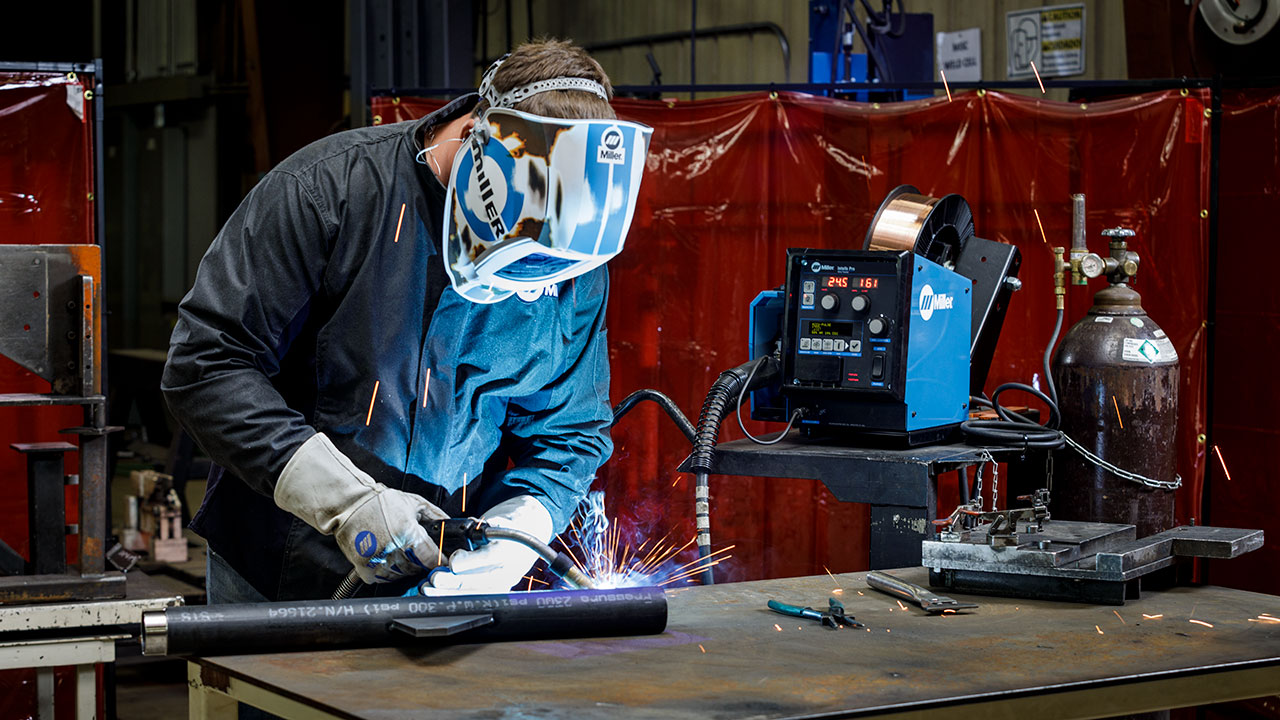Advanced Welding WPS: Tailoring Specifications for Complex Tasks
Getting Welding Excellence: Revealing the Tricks of WPS Implementation and Optimization
In the world of welding, attaining quality is a pursuit that hinges on the meticulous implementation and optimization of Welding Procedure Requirements (WPS) By delving into the crucial aspects, strategies, obstacles, and finest techniques connected with WPS, a world of welding excellence awaits those who are prepared to discover its depths.
Relevance of WPS in Welding
The Value of Welding Treatment Requirements (WPS) in the welding market can not be overemphasized, working as the backbone for ensuring uniformity, quality, and safety in welding procedures. A WPS gives detailed guidelines on how welding is to be lugged out, including important variables such as materials, welding processes, joint layout, filler metals, interpass and preheat temperatures, welding currents, voltages, traveling speeds, and a lot more. By sticking to a well-defined WPS, welders can keep harmony in their work, bring about consistent weld high quality throughout different jobs.

Crucial Element of WPS
Talking about the important parts of a welding procedure spec (WPS) is necessary for understanding its role in welding operations. One important facet of a WPS is the welding procedure requirements, which lays out the details welding procedures to be used, such as gas tungsten arc welding (GTAW) or shielded metal arc welding (SMAW) By integrating these key elements into the WPS, welding treatments can be standard, making certain top quality, effectiveness, and safety and security in welding operations.
Approaches for WPS Optimization

Second of all, training and qualification of welding workers according to the details requirements of the WPS is critical. Supplying thorough training programs and ensuring that welders are accredited to carry out treatments laid out in the WPS can lead to better welds and lowered rework.
Additionally, leveraging modern technology such as welding software and tracking systems can help in maximizing WPS. These devices can assist in tracking variables, making certain parameters are within specified restrictions, and giving real-time feedback to welders, enabling them to make immediate adjustments for enhanced weld high quality.
Typical Difficulties and Solutions
Encountering obstacles in executing the strategies for WPS optimization can hinder welding operations' performance and top quality. One typical challenge is inadequate training or understanding of the welding treatment specs (WPS) among the welding team.
An additional obstacle is the lack of proper documentation and record-keeping, which is crucial for WPS optimization. Without clear documents of welding specifications, materials made use of, and assessment results, it comes to be difficult to identify locations for enhancement and guarantee uniformity in welding procedures. Carrying out a robust documents system, such as digital welding monitoring software application, can assist streamline record-keeping and promote data evaluation for constant renovation.
Furthermore, irregular welding devices calibration and maintenance can present a considerable obstacle to WPS optimization. Regular tools checks, calibration, and maintenance timetables should be abided by strictly to ensure that welding specifications are accurately managed and kept within the specified resistances (welding WPS). By resolving these typical challenges with proactive services, welding procedures can enhance effectiveness, top quality, and total welding excellence
Ideal Practices for WPS Implementation
To make sure effective WPS implementation in welding procedures, adherence to industry standards and careful focus to information are critical. When launching WPS implementation, it is important to begin by completely recognizing the details welding demands of the job. This requires a comprehensive evaluation of the welding treatment specs, materials to be bonded, and the ecological problems in which the welding will certainly take place.
When the demands are click resources clear, the following step is to choose the proper welding treatment that straightens with these requirements. This involves speaking with the pertinent codes and standards, such as those given by the American Welding Society (AWS) or the International Organization for Standardization (ISO), to ensure compliance and quality.
Additionally, documenting the entire WPS application procedure is crucial for traceability and high quality control. In-depth records must be kept relating to welding criteria, material prep work, preheat and interpass temperatures, welding consumables utilized, and any kind of variances from the original treatment. Routine audits and testimonials of the WPS can aid determine locations for enhancement and guarantee continuous optimization of the welding procedure.


Conclusion
To conclude, the application and optimization of Welding Treatment Specs (WPS) is crucial for accomplishing welding excellence. By recognizing the crucial elements of WPS, carrying out effective methods for optimization, dealing with typical obstacles, and following ideal methods, welders can make certain top quality welds and secure working conditions. It is critical for professionals in the welding sector to prioritize the proper implementation of WPS to enhance general welding performance and attain preferred end results.
The Significance of Welding Treatment Requirements (WPS) in the welding market can not be overemphasized, serving as the backbone for making certain consistency, high quality, and safety in welding procedures. A WPS gives detailed directions on exactly how welding is to be carried out, consisting of necessary variables such as products, welding procedures, joint style, filler steels, interpass and preheat temperatures, welding currents, voltages, travel speeds, and much more. One important my response facet of a WPS is the welding procedure requirements, which lays out the details welding processes to be used, such as gas tungsten arc welding (GTAW) or protected metal arc welding (SMAW) By incorporating these crucial aspects right into the WPS, welding treatments can be standard, ensuring quality, effectiveness, and security in welding operations.
It is necessary for professionals in the welding sector to focus on the correct execution of WPS to boost total Website welding efficiency and attain wanted end results.